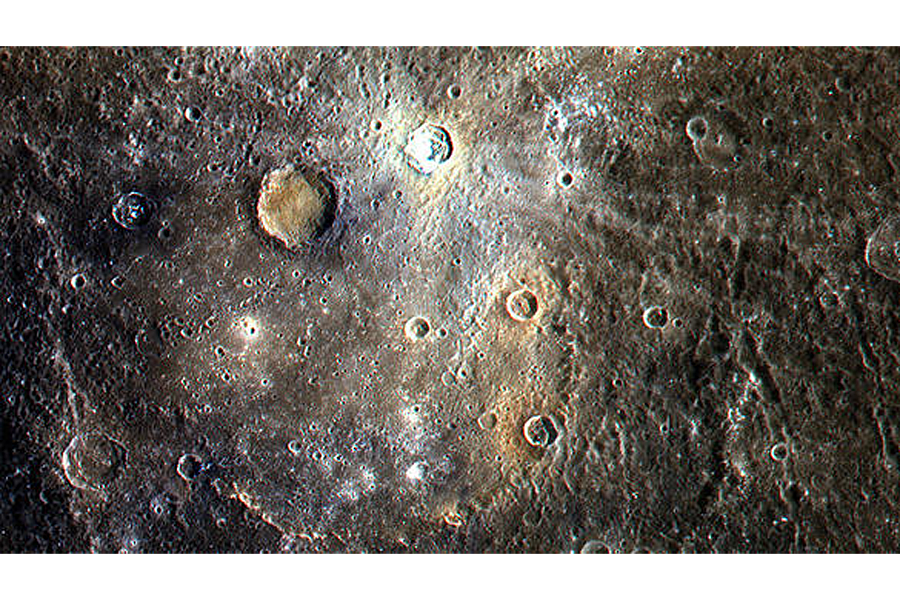Now is your chance to name a crater on Mercury
Loading...
Sen—The opportunity to name a crater on Mercury after a favourite artist is being offered by the team promoting NASA's MESSENGER mission.
The probe—whose name stands for MErcury Surface, Space Environment, GEochemistry, and Ranging—has been orbiting the innermost planet in the Solar System since March 2011.
Its detailed imaging has revealed a host of new craters and other features. And to find names for five impact craters, the mission team are launching a competition open to all. It runs from 15 December until 15 January, 2015.
All crater names on Mercury must be named after an artist, composer or writer according to the rules of the International Astronomical Union (IAU) which polices the naming is stars and planets in the heavens and features on them.
But you cannot just pick your favourite pop star because their rules also state that the person must have been famous for more than 50 years and dead for more than three years.
Furthermore, the name must not have any political, religious, or military significance. And if another feature in the Solar System already has the same name, then it may not be used either.
In December 2013, John Lennon was one of ten new craters named by the IAU. A list of all current names of craters on Mercury can be found by visiting this IAU site.
After the contest's closing date, the MESSENGER Education and Public Outreach (EPO) team will submit a shortlist of 15 finalists to the IAU for the five winners to be chosen. They will be announced in late March or April 215 to coincide with the end of the MESSENGER mission. The probe is due to be crashed into the planet in the spring.
The EPO team's leader, Julie Edmonds of the Carnegie Institution for Science, said that the competition was organised to celebrate the achievements of the mission.
Sha said in a statement: "This brave little craft, not much bigger than a Volkswagen Beetle, has travelled more than 8 billion miles since 2004—getting to the planet and then in orbit.
"We would like to draw international attention to the achievements of the mission and the guiding engineers and scientists on Earth who have made the MESSENGER mission so outstandingly successful."
MESSENGER was originally scheduled to operate for one Earth year but there were two extensions granted by NASA to keep it working. This allowed it to send home 250,000 images of Mercury—a hundred times more than the 2,500 originally planned for.
Edmonds added: "We now have a detailed, high-resolution map of the entire planet. As scientists study the incredible data returned by MESSENGER, it becomes important to give names to surface features that are of special scientific interest.
"Having names for landforms such as mountains, craters, and cliffs makes it easier for scientists and others to communicate."
Enter the contest online here.
Related Links:
John Lennon among ten newly named craters on Mercury
MESSENGER snaps build stunning colour globe of Mercury
Messenger settles into new orbit to probe Mercury
Original story from Sen. © 2014 Sen TV Limited. All rights reserved. This material may not be published, broadcast, rewritten or redistributed. For more space news visit Sen.com and follow @sen on Twitter.





